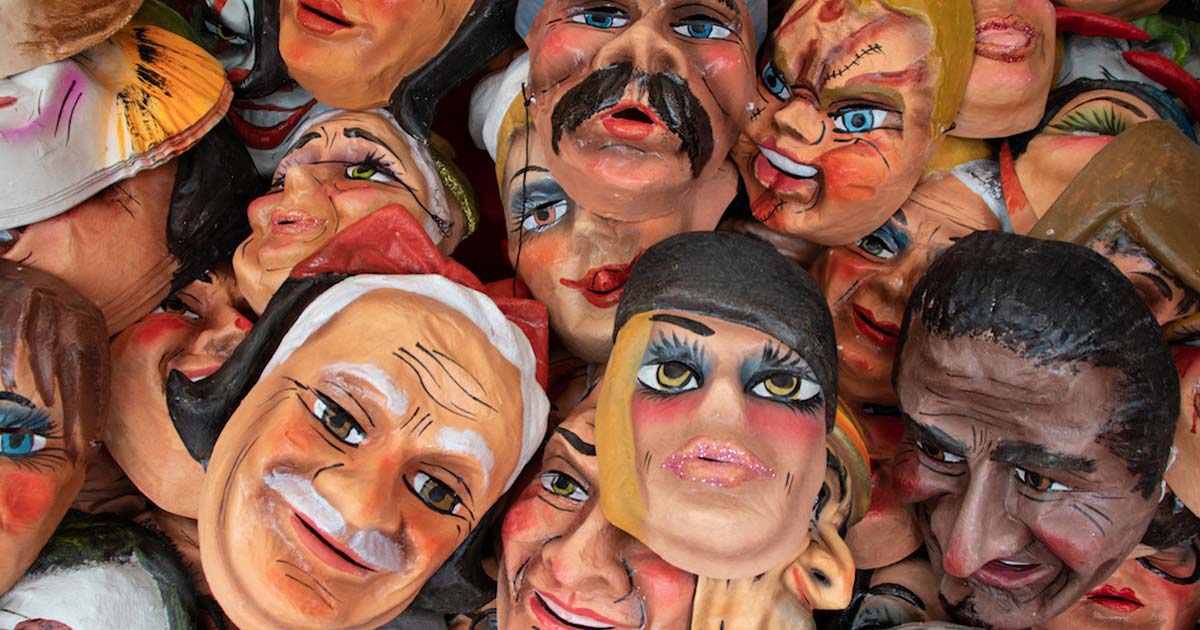Ecuadorian Effigies Share Last Will and Testament on New Year's Eve
In Ecuador, New Year’s celebrations are steeped in unique traditions and peculiar rituals. One such eccentric custom is the creation and burning of Año Viejo effigies on the night of the 31st December each year.
These events are part of a collective effort to bid farewell to the old year and welcome the new. The effigies—often representing political figures, celebrities or personal acquaintances—embody the struggles and triumphs of the year gone by. Often crafted with meticulous attention to detail, it's a therapeutic and communal process, allowing individuals to channel their hopes and grievances into the creation of these expressive figures.

New Year’s Eve effigies, known locally as monigotes, which are burned at midnight in Ecuador. (Renato / Adobe Stock)
Ancient Origins of Ecuadorian New Year’s Eve Effigies
Juana Cordova, in the Revista Artesanías de América, wrote that the ancient origins of this custom can be traced back to ancient Rome, where effigies symbolizing evil and human vices were burned as people sought renewal and purification at the start of a New Year. Cordova argued that echoes of these traditions can be found in the Fallas celebrations held every March in Valencia, Spain, and the Easter-time ritual burning of Judas traditions.
The New York Times reported that Año Viejo effigies are a fusion of indigenous Andean rituals and the influence of Spanish colonial traditions. There is even archival evidence of indigenous peoples in Otavalo burning effigies of their feudal lords during the different solstice celebrations.
The shift to using effigies on New Year’s Eve has been traced to the 19th century. Several sources note that during a Yellow Fever outbreak in Guayaquil, people would create effigies using the clothes of those who had perished from the virus. They would then burn them in the street as a way to ward off the plague.

Año Viejo effigies burning during Ecuadorian New Year’s Eve celebrations. (Estebanlejo / Adobe Stock)
Reading the Last Will and Testament of Año Viejo Effigies
Setting these symbolic figures ablaze is a form of popular expression with profound meaning, particularly in a society with glaring social inequalities. The events create a cathartic and transformative experience for participants, when people feel free to express, sometimes ironically, their true opinions and feelings about the past year.
Constructed from old clothes, masks, newspaper and even fireworks, burning these effigies symbolizes shedding the misfortunes of the past year. Accompanied by music and laughter, it's a metaphorical exorcism, allowing the community to cast away the old and embrace a new beginning.
In a peculiar twist to the New Year celebrations in Ecuador, communities engage in the symbolic reading of a will before setting the effigy ablaze on New Year's Eve. This whimsical custom involves humorous bequeathals, satirical legacies and comical predictions, adding a touch of whimsy to the ritualistic farewell to the old year.
Top image: Papier mache masks on sale for making effigies or “monigotes” to burn during New Year’s Eve celebrations in Ecuador. Source: Iryna / Adobe Stock

















